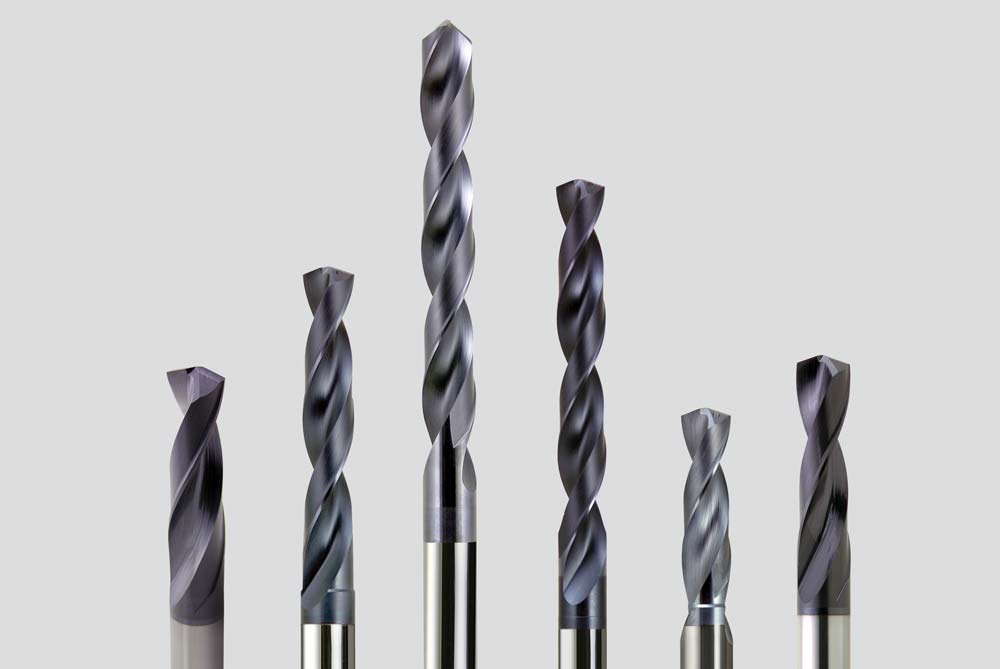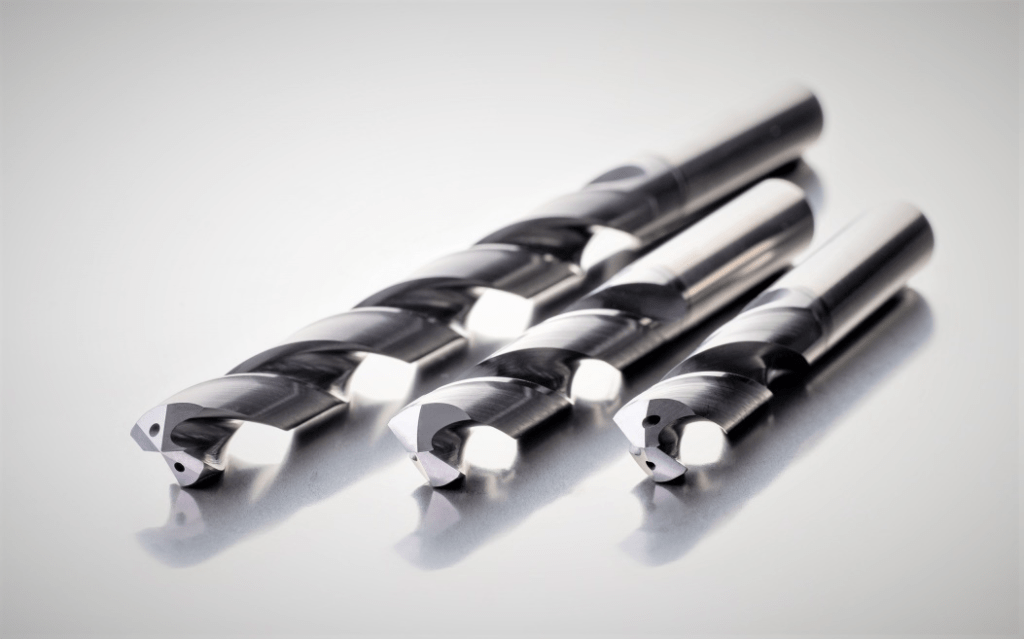Drills are among the most necessary tools that can be found in a toolbox. Your drills need to be able to cut holes in a variety of materials, including wood, plastic, metal, and others, while following to exact dimensions and quality requirements in order to be effective for your business or product. However, if the drill bits that come with it aren’t up to the task, then the greatest drill in the world won’t be of much help to you. The effectiveness of your drill is not actually determined by the power of the drill itself, but rather by the bit.
In this article, we’re going to take a look at the most important aspects of a drill bit, such as the metal it’s made out of, the tip, and the coating, as well as how cryogenic processing can be used to build drill bits that are more durable and last for longer periods of time.
What Is A Carbide Drill?
To begin, it is necessary for us to have an understanding of the construction process behind drills. Steel alloys are used in the manufacture of several different types of drills rather than a single element. Some drill bits have an additional substance tipped on the end of them or coated on them so that they are more durable or resistant to rust.
Because of its low cost and its ability to easily slice through wood, plastic, and soft steel, high-speed steel, abbreviated as HSS, is frequently used in the manufacture of drill bits and power saw blades. The fact that HSS drill bits cut more quickly than bits made of other varieties of steel is where their name comes from. On the other hand, despite the fact that high-speed steel is suited for a wide variety of maintenance activities, it is not appropriate for more industrial applications; here is where other materials come into play.
Because they are fabricated from a steel alloy that contains between 5 and 8% cobalt, cobalt drill bits have the ability to cut through steel as well as other types of hard metals, such as cast iron.
Titanium drill bits are often constructed of steel that has been coated with titanium. Because of this, they are not as durable as cobalt drill bits and are more likely to have their titanium coating wear off over time.
The third type of compound is known as carbide, which in this context refers to tungsten carbide and is a combination of carbon and tungsten. Bits used for drilling with carbide are typically composed of steel and have a carbide tip. Because of their exceptional strength, they are frequently utilised in a variety of industrial applications. They are able to slice through a variety of materials, including tile, concrete, and masonry.
The sort of drill bit that you want is determined by a number of criteria, the most important of which is the material that you will be cutting, as well as the required length of the drill bit. Even if they are constructed from a durable material, longer drill bits are more likely to be fragile and to shatter when they break.
Let’s take a look at the many stages involved in the manufacturing process of carbide dill:
- Materials Selection
Carbide drills have been the go-to tool for machine shops and metal fabricators for many years now when it comes to drilling holes. In point of fact, the first carbide tools were invented more than a century ago, and cobalt came along not long after they were introduced. Because of their durability, user-friendliness, and low cost, these general-purpose cutting tools are a popular among manufacturing facilities, job shops, and maintenance and repair facilities that must deal with a broad variety of workpiece materials.
Carbide is used in the production of standard drills because of its mechanical qualities. These features allow standard drills to keep their toughness, demonstrate strong abrasion resistance, and withstand changes in harness as a consequence of the heat that is generated during the drilling process. When choosing a carbide drill for a certain application, it is best practise to keep the amount of heat that will be produced in mind. This is because carbide drills generate more heat than other types of drills.
Carbide drills have just one major drawback, despite their long and illustrious history, and that is the fact that they are painfully slow. Carbide has a cutting speed that is approximately one-fourth that of its more recent equivalent, tungsten carbide, and a penetration rate that is far lower than either of those two speeds. Granted, some businesses have restricted holemaking demands or exclusively drill soft materials like plastic and wood; nonetheless, unless these shops are searching for improved precision or a longer tool life, a carbide drill is just suitable for their purposes. However, solid carbide, indexable, and modular drills are the best option for companies that want to achieve the highest possible levels of productivity from their CNC lathes and machining centers. Following the selection of the carbide drill material, it should be prepared for cylindrical grinding.
- Cylindrical Grinding
The method of cylindrical grinding involves using a grinding wheel that rotates in a horizontal axis to cut or grind a cylindrical work-piece that is placed on a chuck or between centres that rotate in an axis that is parallel to the axis that the grinding wheel rotates in, in the same plane. In order to get the grinding process started, you have to make a reciprocating motion with the work-piece as you feed it to the rotating grinding wheel. You may adjust the depth of cut by moving the grinding wheel head closer to the component you’re working on.
Because of this, the grinding wheel and drills are directed toward each other in a complicated three-dimensional grinding process. As a result, the drill is ground in the manner that is wanted without the need for two separate grinding processes. There are no ridges produced in the region of the clearance face and chisel edge surface as a result of the continuous grinding process. Ridges of this sort would be inevitably produced in the event that the grinding process was performed in two stages. When the wheel speed exceeds 100 meters per second, making the spiral groove of the drill to be ground out of the complete material, high-speed grinding may minimize the cutting force, considerably enhance the surface quality, and reduce the shape error. Additionally, high-speed grinding can reduce the size of the mistake in the shape. In contrast to the milling procedure, the grinding method may significantly cut down on the amount of time needed to complete a single item while maintaining excellent quality and consistency. After the material has been thoroughly grounded, it is ready to be tapered in the other direction.
- Reverse Taper
The structure with a reverse taper has a shank portion, and the body of the structure is located at one end of the shank section. On an exterior surface of the body, there are two spiral grooves that combine to produce two spiral relief surfaces. The radius of the spiral relief surfaces becomes steadily smaller as one moves from the front end of the body to the shank section of the body. Taper shank drills are made of high-speed steel and are cutting tools that may be used to drill holes when connected to various types of machines such as drill presses, milling machines, and lathes. High-speed steel is a material that has tungsten, molybdenum, and chrome added to it. It has exceptional abrasion resistance and toughness, and it is the basic metal. It is resistant to breaking and chipping, and it is suitable with a large variety of work materials. Additionally, it is compatible with a wide variety of work materials. Homogenizing treatment, which offers high lubrication performance and coating, which enhances abrasion resistance are both examples of the sorts of surface treatment that may be applied to a taper shank drill. A The diameters of the blades and the lengths of the tips of the blades may also vary, and each can be chosen and employed differently depending on the kind of processing being done. Following the completion of the reverse taper operation, the drill then proceeds to the CMC machine grinding stage.
- CNC Machine Grinding
During the finishing process, CNC grinding machines are used to make a high-quality metal workpiece for camshafts, ball bearings, transmission shafts, and other working items that demand accuracy and precise finishes. This includes camshafts, ball bearings, and transmission shafts. The grinding process used in CNC machines may either use grinding wheels, abrasive heads, or abrasive cloths to remove the material. For this reason, Huana is able to provide you with solutions for a wide variety of application areas, ranging from CNC machine grinding to the fabrication of carbide drills for occasional usage. Because of the high quality of the end product, secondary processes may be kept to a minimum, which in turn keeps the cost factor down. Following the completion of the grinding process on the CNC machine, the carbide drill is next put through its paces in the testing phase.
- Testing
Offering fully tested, proven, and certified carbide drill, testing, production, and process packages that have been specially designed to add maximum value to clients’ exploration, appraisal, and production activities requires substantial experience in making carbide drills and quality fabrication operations. Carbide drills of a high grade are produced because the manufacturers have a deep understanding of the relevant requirements and methods.
For the creation of carbide drills of the highest quality, well test and early production facilities utilize anything from stand-alone equipment like separators and surge tanks to fully integrated packages that include everything from heaters and heat exchangers to heaters. When the method of testing the carbide drill is finished, the carbide drill is transferred to the passivation process.
- Passivation
The passivation process for carbide drill is a method for improving the corrosion resistance of carbide parts. This is accomplished by removing ferrous contaminants such as free iron from the surface of the carbide parts, thereby restoring them to the original corrosion specifications they were designed to withstand. This harmless coating of chrome oxide is produced by nature when coming into contact with oxygen from the surrounding air. However, the passive layer is susceptible to being scraped or removed entirely. The passive layer is susceptible to damage from abrasives, chemicals that are corrosive, and free iron, which are minute iron particles that have been deposited on the surface by tools. Over the course of a few hours, scratched surfaces will spontaneously repair themselves by regaining the passive layer. The harm, on the other hand, that was brought on by caustic chemicals and contamination with free iron will not regenerate. Following the process of passivation, the carbide drills are subjected to coating processing.
- Coating
The manufacturer applies a very thin layer of titanium nitride (TiN) to the whole surface of the carbide drill so that it will last far longer. The method known as “physical vapor deposition” is the one that is used for the application of titanium nitride the vast majority of the time (PVD). During the physical vapor deposition process, a vacuum-sealed container containing solid titanium nitride is positioned next to the drill. Titanium nitride “sublimates” when it is heated in an environment with extremely low pressure, such as a vacuum. This means that it goes immediately from a solid state into a gaseous one. In the meanwhile, individual molecules of this gas are gradually adhering to the outside of the drill until its whole is coated in a layer that is both robust and very thin.
Which Drill Point Angle Should Be Used?
Point Angles
The angle of 118 degrees and the angle of 135 degrees are the two most common drill bit tip angles. Both of these angles are measured in degrees. In comparison to the 90-degree bit, the 118-degree bit has a more acute angle, a more pointed tip, and a more condensed chisel. Additionally, the 118-degree bit is longer than the 90-degree bit.
Because of the more forceful cutting action of the bit, drilling into soft materials like wood often requires a bit with a cutting angle of 118 degrees. This is because the cutting action of the bit is stronger. Even if it is able to punch through steel, if it is used for this reason, the more sharp cutting angle will cause it to dull more quickly. If this is the purpose for which it is used, however, it will be able to punch through steel.
When drilling into harder materials, it is best practise to use a bit that has a pitch of 135 degrees since this gives the best results. This is due to the fact that the pitch makes it simpler to drill a large number of holes into the more difficult material.
In order to choose an acceptable drill point angle for your bit, you should first ask questions concerning the application you will be using it for. Yes, a hole is a hole, and while some angles are more common than others, there is no actual standard drill tip angle. However, some angles are more prevalent than others. Instead, you should think about the following questions: what is the function of the hole, what kind of metal are you cutting into, and what are the requirements for the hole once it is complete?
In addition to the angle of the drill tip, the following are some of the other elements that might influence effective drilling:
- Rigidity
- Speed
- The overall length of the drill
- The Flow of Coolant
Different kinds of drill points
There are two primary properties that distinguish a drill point for metal from one another. The included angle of the point comes first, followed by the configuration of the point as its own separate entity. When selecting drill types for a certain project, the point arrangement is an important factor to take into consideration.
Standard Drilling Angles
The point angle of a bit refers to the angle at which the cutting head is positioned on the very end of the bit. Consumer drill bits often come in angles of 90 degrees, 118 degrees, and 135 degrees. These are the three most popular angles. Because of how quickly they wear out, 90-degree bits are reserved only for use on soft materials such as plastic and aluminum. You may always use a protractor to mark the angles on paper as we have done here if you are unsure of what you have. This is what we have done here.
The angle of 118 degrees is the one that is most frequently utilized for consumer bits. They are appropriate for working with virtually any substance, including steel, aluminum, wood, stainless steel, brass, cast iron, and plastic, to name a few of the more common ones. Because these bits can walk on stronger materials like steel and stainless steel, you’ll need to use a center punch to secure them in place during the first cut you make with them.
118 degrees and 135 degrees are the included angles that are used for drills the most frequently. These angles are a relic from the days when drilling was mostly done by hand and the bits used in the operation had the traditional conical form. Over the course of time, those who worked in the tool industry discovered that by grinding a conical point with a flat surface (a facet) to create a linear chisel, they could improve the process of cutting metal or wood and remove chips while simultaneously reducing the amount of thrust that was required. This is obviously going to be a big help if you’re doing the drilling by hand.
The use of drill bits with several facets has become standard practice in modern drilling machines. Not only do they create 60% less heat than a normal drill point, but they also require 50% less thrust to operate than a standard point would. In addition, there are a variety of alternative configurations, and each of these configurations, when coupled with a certain drill point angle, is suited for a distinct set of tasks.
The majority of jobber drills come equipped with general purpose drill tips that have an angle of 118 degrees. In most cases, they are utilized for slicing through mild metals such as aluminum, whilst the type with a 135° angle is more appropriate for cutting through tougher materials such as stainless steel. A drill with an angle of 135 degrees is flatter than one with an angle of 118 degrees; this implies that more of its cutting lips interact with the surface of the material sooner, so initiating the entire metal cutting motion.
Factors To Consider When Choosing A Carbide Drill
Application: If you are only drilling a few holes in mild steel and the time requirements are insignificant, HSS would likely work just fine. However, with tougher tool steels, such as H-13, S-7, A-6, D-2 or 420SS, the need for carbide increases dramatically.
Size of hole: For holes under .5 in solid carbide is required. Solid carbide is available in an almost unlimited size range, while insert drills are much more limited in scope.
Coolant-thru drills are generally recommended and perform much better than external coolant drills. Regardless of the carbide drill selected, coolant-thru is recommended.
Interrupted or contoured cuts make hole drilling much more difficult. One typical solution is to mill or spot face, then drill. The solid carbide drill is generally less prone to deflection than an insert drill and is therefore very often the best choice. One exception is the exchangeable tip drill. The geometry of this newer generation of drill enables it to cut much more like solid carbide, without less expense.
All the newest and best drills in the world won’t help much if your budget does not allow it. Cutting tools can be very expensive and must be justifiable in order to make sense. There is also a tendency to use more than is necessary when the tool crib is full of nice, shiny new cutting tools.
Surface finish requirements play a huge role in the selection process. Generally, the solid drills leave a good finish, but for larger holes the inexable inserts can also do an excellent job. There are many factors that go into surface finish, such as machine rigidity, coolant, speeds and feeds, material, and tool holders.
Size tolerances can make the decision making process much easier. If you need a very precise hole, the solid usually is the way to go, but the newer exchangeable insert drills can do an amazing job in record time.
Get in touch with HUANA if you’re looking at buying carbide drills of the highest quality!



